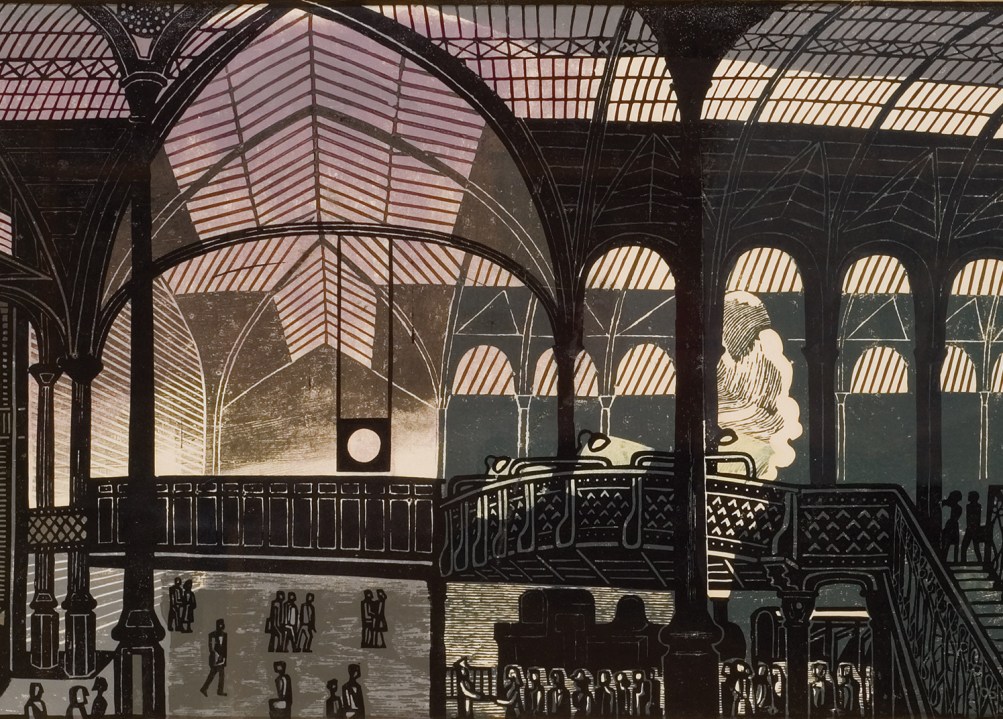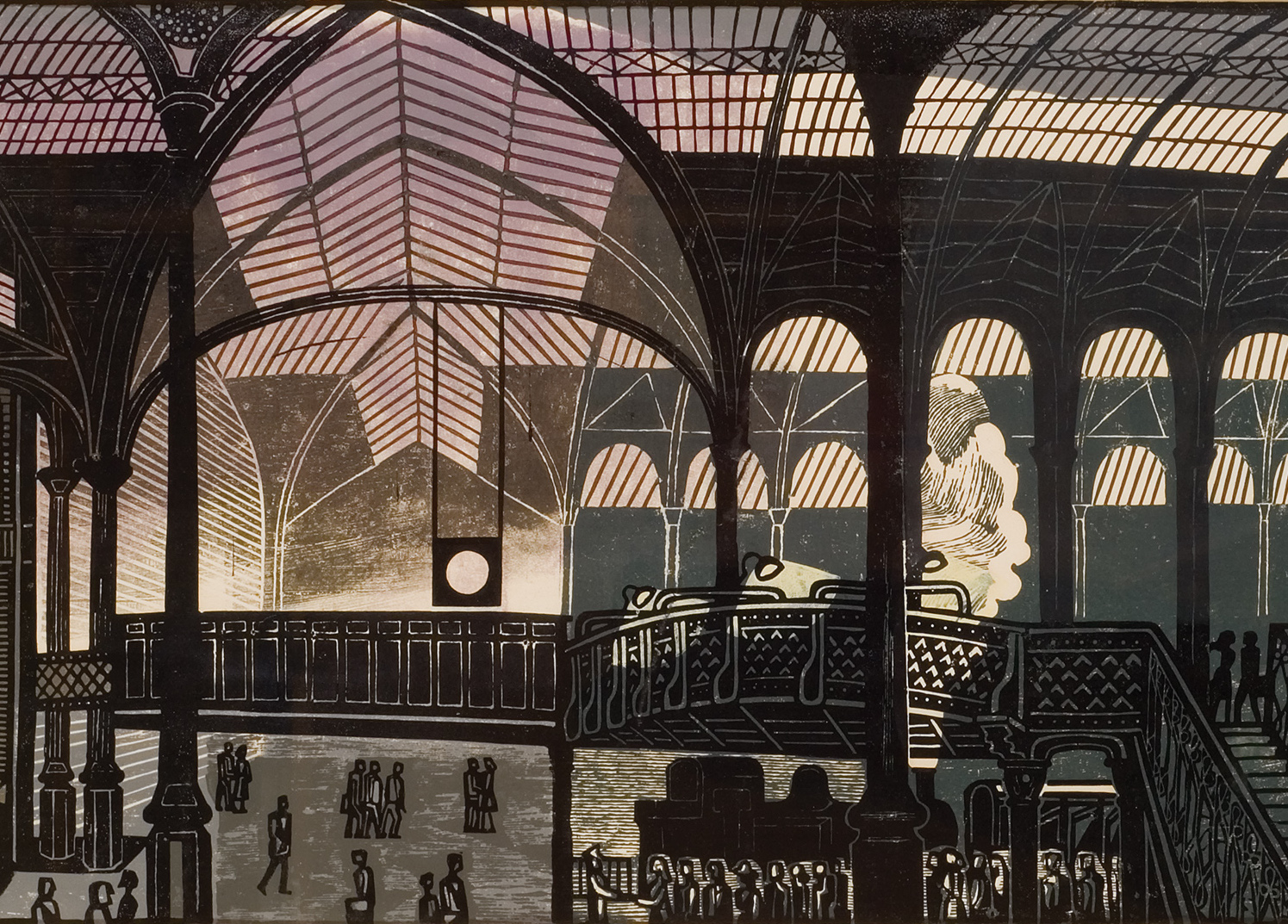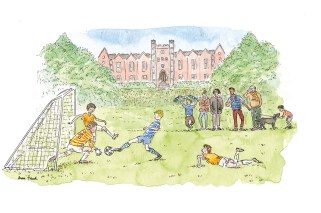‘When I’m on good form,’ Edward Bawden told me, ‘I get to some point in the design and I laugh and talk — and if I’m laughing, it probably means the work is rather good.’ You can see his exuberance everywhere in the exhibition of his work at Dulwich Picture Gallery. It is a thoroughly jolly affair, but it also raises a delicate question: was Bawden (1903–89) really a serious artist?
He was certainly a tricky one to pigeon-hole. Bawden is, deservedly, one of the most popular of 20th-century Britishartists. But when one thinks of him, it is hard to bring a major work to mind — much harder than in the case of his mentor Paul Nash or fellow-student and friend Eric Ravilious.
From the beginning of his career, Bawden seemed determined to subvert the normal hierarchy of artistic forms. According to the art market at least, one-off sculptures and paintings are at the top of the list — ‘important’ and expensive. Financially and critically, these are followed by engravings, etchings and other print media. In last place come items such as posters, book illustrations or humble wallpaper designs.
Bawden thought differently. ‘A good pattern is as good as a painting,’ he said to me on the same occasion, a few months before his death in 1989. ‘I’d sooner have a good bit of William Morris wallpaper than I would a lot of modern rubbish.’ And, as one realises as one walks through the rooms at Dulwich, it was in the so-called ‘minor’ or applied arts that Bawden was often at his quirky and memorable best.
In the 1930s, during which they at one point shared a house in the village of Great Bardfield, Bawden and Ravilious were stylistically close. However, Bawden lacked Ravilious’s ability to create an atmospheric mood in watercolour painting. When the latter depicted a greenhouse full of tomato plants, the result was haunting, just off surreal. In contrast, Bawden, tackling a similar subject in ‘My Vegetable Love’ (1932), became mesmerised by the intricate veins of the leaves that fill the foreground.
He plainly loved the complex and curvilinear. His finest wallpaper design ‘Church and Pigeon’ (1920s) turns an interior into a bower of twisting foliage through which birds and a spire with clock face can be glimpsed, as if through portholes. When illustrating the gastronomic potential of June for Ambrose Heath’s cookery book Good Food, Bawden fixed on the netting protecting the strawberry patch in the garden.
Bawden was a master of horticultural art, but in a characteristically offbeat manner. Unlike most gardeners, for example, he was fond of snails. Two of these creatures are harnessed to a carriage, with a ladybird coachman, on the cover of Snails for All, a handmade book he created for his children during the war. Spiders pleased him too, as did grasshoppers and frogs. He liked small, complicated things.
At 87, when I met him, Bawden was infuriated by what agribiz had done to the East Anglian countryside in which he lived — Bawden was born in Braintree, son of a Methodist ironmonger. He hated the wide, prairie-like fields that had been created by grubbing up hedgerows, and hence habitat for wild life. He lamented: ‘There’s scarcely an animal the size of a mouse to be found in the country now!’
Bawden was more attuned to shape than to light, with the result that his watercolours — though he had his moments when using that medium — can seem a little flat. Consequently, in the room at Dulwich dedicated to landscapes his watercolour of an Essex country churchyard from 1933 is completely upstaged by his linocut of ‘Lindsell Church’ (1963). The latter is bigger, but also stronger, with far more oomph.
The linocut — a technique that lends itself to the creation of strong, simple forms — suited Bawden perfectly. ‘Liverpool Street Station’ (1961) is a masterpiece in that mode — a marvellous evocation of the cavernous, smoky interior of the old station before it was refurbished, in which his eye has plainly been fascinated by the latticed structure of the Victorian cast-ironwork.
There is a paradox here. Even in the 1920s Bawden was very far from being a member of the avant-garde (as his passing reference to ‘modern rubbish’ might suggest). However, his best work with its sharp, rhythmic lines and geometric order, can seem — though Bawden would have hated the word — almost modernist.
This is indeed what gives his work its unique flavour. He looked back to the 19th century — to Morris, Turner, Cotman, Edward Lear and Blake — but, as he noted when I met him, ‘different generations work in different ways’. Although Bawden’s interests and attitudes were distinctly Victorian, his work was filled with the feeling of the times in which he lived — and with his own humorous, quietly anarchic spirit.







Comments